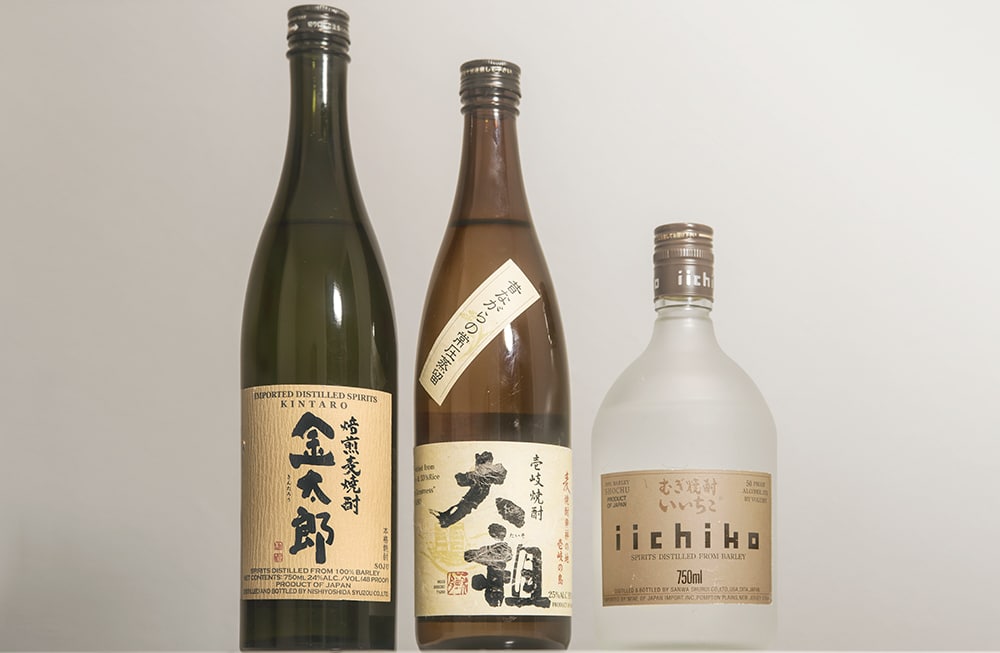Mugi shochu (麦焼酎) is made with barley. It has a deep history and a semi-sweet, mild flavor.
Oil in barley’s outer layers must be milled away. Often the outer 30-40% is removed before making shochu. This is similar to the rice used for sake and rice shochu, which is also milled.
Iki Shochu
The original barley shochu came from Iki Island, Nagasaki near the end of the Edo Period. Rice was abundant, but most of it went to government taxes. So barley was a staple food and made into shochu.
Iki Shochu uses about two parts barley and one part rice koji. And it’s often savory and rich.
“Iki” is a protected geographical indication (GI). It’s one of four shochu GIs.
Iki Shochu Requirments
- must be honkaku shochu
- made in Iki
- made with rice koji and the island’s groundwater
Check out Japan Distilled’s excellent podcast about Iki Shochu.
Oita Mugi Shochu
Oita Prefecture is also known for barley shochu. Restrictions on barley were removed in 1951, and Oita began using the grain for shochu.
Inspired by Oita’s barley koji miso, innovative Sanwa Shurui (Iichiko) introduced 100% barley shochu in the late 1970s, which became a sensation.
Oita’s barley shochu is typically lighter and fruitier than Iki Island Shochu.
Flavor Profile
Mugi shochu is generally light to medium-bodied, smooth, and soft. But there’s a wide range of flavor profiles. Iki Island mugi shochu is often more powerful and rich, while Oita makes a lighter, fruitier style. And barley shochu distilled atmospherically is more robust, grainy, and aromatic. And vacuum-distilled examples tend to be more delicate and fruity.
Types of Mugi
Barley, wheat, and rye are all types of mugi. But mugi shochu is almost always made with barley – the two-row variety.
There is more experimentation in barley shochu today. A handful of brands use six-row barley and others utilize roasted grains.
Barrel Aging
While not standard, some barley shochus are aged in oak casks. Similar to whisky, this imparts spice and tannins from the wood and darkens the color. However, because shochu legally cannot be too dark, color is often removed via charcoal before bottling.

Popular Barley Shochu Brands
By a wide margin, Iichiko is the most famous barley shochu brand. There are several Iichiko products like Seirin, Silhouette, and Saiten.
Other popular shochu brands include Mugon 10-Year, Genkai Iki, Yamanomori, Taiso, Ikinoshima, Satsuma Kannoko, Kintaro, and Sennen no Nemuri.